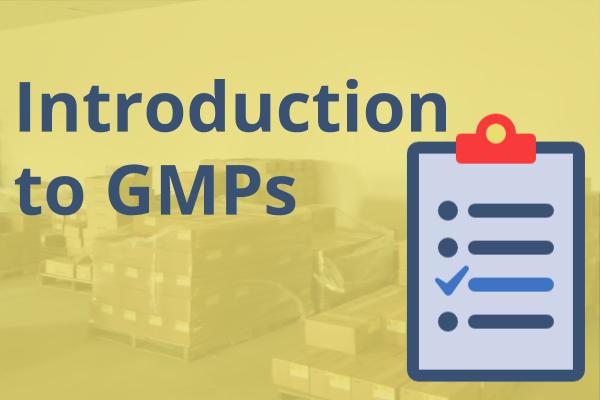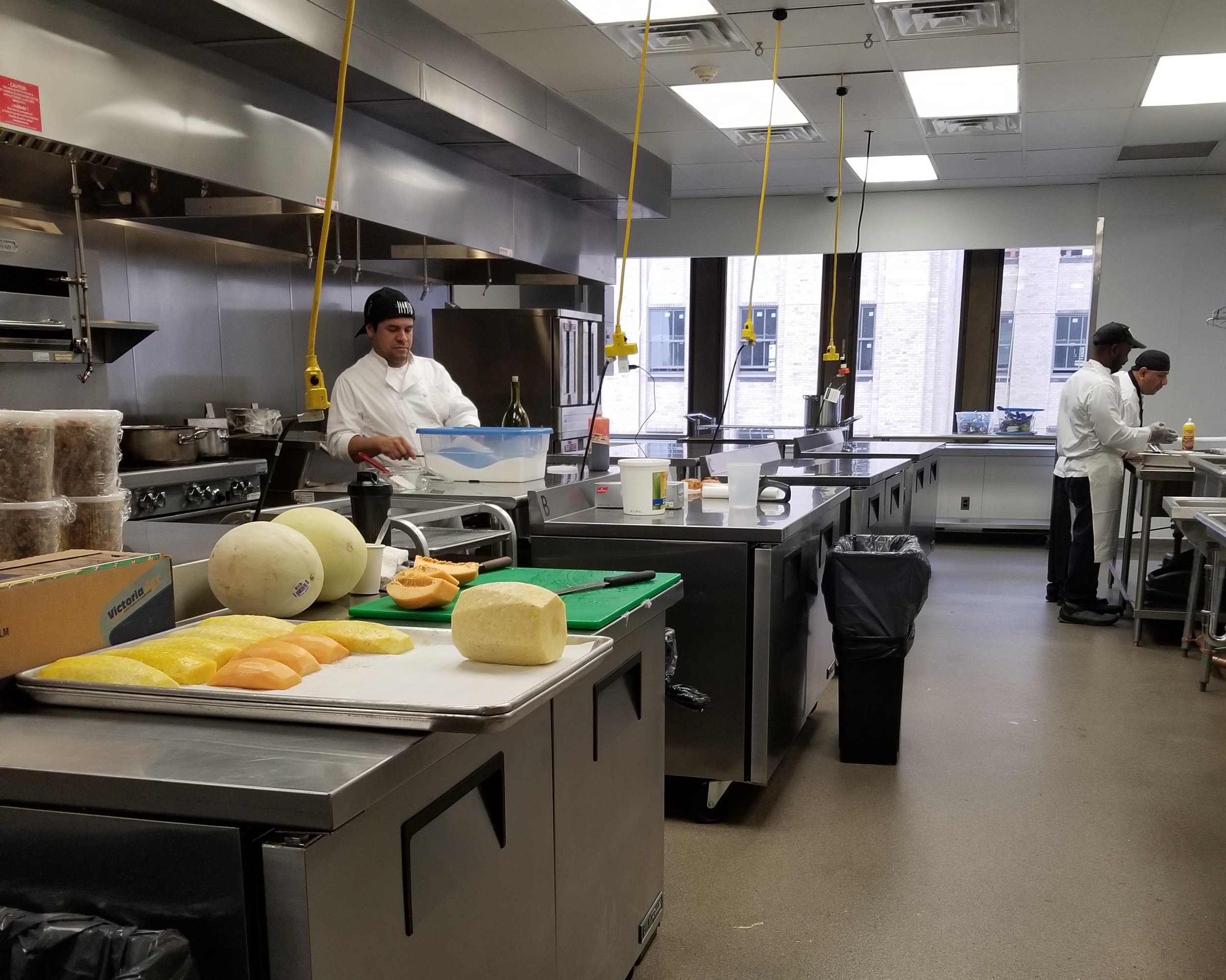Summary of §117 Subpart G
Below is a summary of Subpart G so that you can get a quick sense of the requirements. If you want to read the original text, check out the source texts, linked below.
This text is aligned with the coding used in the FDA Regulations so that you can hunt down the corresponding section with ease. For example, you have a question about my wording in §117.405 (a) (2) then just look up this same code in the CFR.
117.405 Requirement to Establish and Implement a Supply-Chain Program
a.
A facility must establish a risk-based supply-chain program for the ingredients and raw materials that have a hazard requiring a supply-chain-applied control.
Importers who conduct foreign-supplier-verification programs don't need to conduct supply-chain-applied controls for those materials whose hazards have been mitigated.
Requirements in this part don't apply to food whose use is research or testing. However this food,
i. May not be sold or given to the public
ii. Must be labeled "food for research or evaluation use"
iii. Is supplied in small quantity and disposed of.
iv. Is accompanied with documents stating the food is for research and not for public consumption.
b. The supply-chain program must be written.
c. If the supply-chain-applied control is applied by a 3rd party (i.e. not the receiving facility and not the produce supplier -- let's say it's a 3rd party that washes produce on behalf of a farm who sells it to a food processor), then the receiving facility must:
verify the control themselves
obtain documentation to verify that the control was applied.
§117.410 General Requirements Applicable to a Supply-Chain Program:
a. The supply-chain program must include:
Using approved suppliers (i.e. an approved supplier list)
The determination of appropriate supplier verification activities
Conducting supplier verification activities
Documenting supplier verification activities
When applicable, verifying that a supply-chain-applied control was applied by a 3rd party.
b. The following are appropriate supplier verification activities for raw materials and other ingredients:
Onsite audits
Product sampling
Review of suppliers food safety records
c. The supply chain program must provide assurance that a hazard requiring a supply-chain-applied control is minimized or prevented.
d.
1. In approving suppliers and determining verification activities, you must consider:
i. The nature of the hazard
ii. Who will be applying the controls on behalf of your supplier
iii. Supplier performance, including their history, audit results, test results, etc.
iv. Storage and transportation practices
2. If you are considering the suppliers history, this may be limited if they are a small business, a farm, or a facility that is exempt from some FDA provisions.
e. If you learn that a supplier is not controlling a hazard that you identified must be controlled by the supplier, then you are obligated to document this and take prompt action.
117.415 Responsibilities of the Receiving Facility
a.
1. the receiving facility must approve suppliers
2. The receiving facility must conduct all supplier verification activities.
3. A 3rd party may do the following on behalf of the receiving party:
i. establish procedures for receiving raw ingredients
ii. Document that written procedures for receiving raw materials are being followed
iii. Determine and conduct supplier verification activities
4. The supplier may conduct product testing themselves and provide this to the facility conducting the supplier verification.
b. A receiving facility may not accept any of the following as a supplier verification activity:
Determination by the supplier of appropriate supplier verification activities.
An audit conducted by the supplier
A review of records by the supplier of the supplier.
c. The receiving facility may accept a 3rd party audit result provided by the supplier.
§117.420 Using Approved Suppliers
a. Approval of Suppliers The receiving facility must approve suppliers and document it before receiving ingredients from them.
b. Written procedures for receiving raw materials and other ingredients
You must write and implement procedures for receiving products (i.e. a receiving SOP)
Your written procedures must ensure that ingredients are only received from approved suppliers
The use of these written procedures must be documented (i.e. you must have a receiving log to show that you are following your written receiving procedure)
§117.430 Conducting Supplier Verification Activities for Raw Materials and Other Ingredients
a. You must conduct supplier verification activities before using the supplier.
b.
When a hazard in a raw material will be controlled by the supplier and the outcome of exposure to the hazard results in a serious injury or death, then:
i. the appropriate supplier verification activity is an onsite audit
ii. the audit must be conducted before that raw material is supplied and at least annually thereafter.
2. The requirements above (b) (1) don't apply if other verification activities can provide assurance that this hazard is controlled.
c. If the supplier is a qualified facility, the receiving facility doesn't need to comply with parts (a) and (b) of this section.
The receiving facility must get an annual written assurance of the quality facility exemption for their supplier.
The receiving facility must get written assurance every 2 years that the supplier is compliant with FDA regulations or the equivalent. This must include
i. description of the preventive controls in place used to control hazards.
ii. Statement that the facility is in compliance with all applicable laws.
d. If the supplier is a farm that grows produce not covered under 112 (FDA produce standards), the receiving facility doesn't need to comply with parts (a) and (b) of this section.
The receiving facility must get an annual written assurance of the supplier's exemption from part 112 for their supplier.
Obtains written assurance that acknowledges that the food is subject to FDA regulations
e. If the supplier is a shell egg producer not subject to requirements of part 118 (FDA Shell Egg Standards) because they have fewer than 3,000 laying hens, the receiving facility doesn't need to comply with parts (a) and (b) of this section.
The receiving facility must get an annual written assurance of the exemption from part 118 for their supplier, because the supplier has fewer than 3000 laying hens.
Obtains written assurance that acknowledges that the food is subject to FDA regulations
f. There must not be any financial conflicts of interests related to verification (i.e. payments to a company performing supplier verification cannot be related to the results of the activity).
§117.435 Onsite Audit
a. An onsite audit must be performed by a qualified auditor
b. The auditor must consider all regulations to which a supplier is subject. The audit must include a review of food safety plan/HACCP plan.
c.
The following may be substituted for an onsite audit:
i. Inspection results from the FDA, State, or local agency.
ii. Inspection results from an overseas FDA equivalent.
2. If the inspection is from a foreign authority recognized as equivalent to the FDA, then the food produced by the supplier must fall within the scope of that recognized authority.
§117.475 Records Documenting the Supply Chain Program
a. Records related to supply-chain program are subject to requirements of Subpart F
b. The receiving facility must review the supplier records below in part (c) in the same manner that they would complete their own record verification (as defined in §117.465)
c. The facility must document the following records in their supply-chain program
Written supply chain program
Documentation that an importer is in compliance with the supply chain verification program requirements.
Documentation of the approval of that supplier
Written procedures for receiving raw materials and ingredients.
Documentation demonstrating the use of written procedures for receiving raw ingredients (This could be a receiving log)
Documentation of the approval of the supplier
Documentation of an onsite audit, including:
i. the name of the supplier being audited
ii. documentation of audit procedures
iii. dates of the audit
iv. conclusion of the audit
v. corrective actions to be taken in response to deficiencies found in the audit.
vi. documentation that the audit was conductected by a qualified auditor
8. Documentation of sampling and testing (if conducted as part of supplier verification)
i. Identification of ingredient tested, number of samples tested.
ii. Identification of test conducted including the analytical methods.
iii. Dates of the tests
iv. Test results
v. Corrective actions taken in response to the testing
vi. Information identifying the lab conducting testing
9. Documentation of the review of the supplier's relevant food safety records.
i. The name of the supplier
ii. Dates of the record review
iii. General nature of the records review
iv. Conclusions of the review
v. Corrective actions taken in response to deficiencies found.
10. Documentation of other supplier verification activities conducted.
11. Documentation of the determination that verification activities conducted in lieu of an onsite audit are sufficient in the case that the hazard controlled by the supplier is one that could cause serious health consequences or death. You must provide adequate assurance that the supplier is controlling those hazards.
12. Documentation of an alternative verification activity if the supplier is a qualified facility.
13. Documentation of an alternative verification activity if the supplier is a farm.
14. Documentation of an alternative verification activity if the supplier is a shell egg producer.
15. The written results of an inspection of the supplier
16. Documentation of actions taken with respect to non conformance.
17. Documentation of mitigation of a hazard, if that control is applied by a 3rd party.
18. When applicable, documentation about the 3rd party and their verification activities.


























































